

ScienceNews for Students. Nonfiction Literacy and Current Events. Students excel in 'textbook-free' history class. STANFORD (US) — Students who studied a textbook-free curriculum outperformed their peers in traditional history classes.
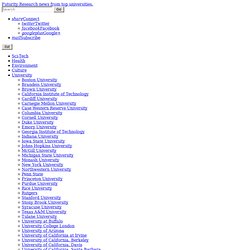
The non-traditional history curriculum, called Reading Like a Historian, was designed at Stanford University and was introduced in 2008 at five schools in the San Francisco Unified School District as part of a study by Stanford head curriculum designer Abby Reisman. Her evaluation of the curriculum is published in the current issue of the journal Cognition and Instruction. There are no orderly rows of desks in Valerie Ziegler’s 11th-grade history class—students sit in groups of three or four at small tables around the room. There also is no lectern because there are no lectures. And perhaps most striking, there are no textbooks. “I always tell my students they’re historians-in-training, so the work we do in here is that of a historian,” Ziegler says. Testing the results The classroom experience She also says it’s more fun to teach. More news from Stanford: Teaching with Text Sets.
This week, we celebrate the publication of Mary Ann and Erika’s book, Teaching with Text Sets.
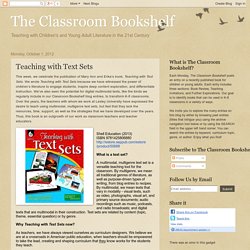
We wrote Teaching with Text Sets because we have witnessed the power of children’s literature to engage students, inspire deep content exploration, and differentiate instruction. We’ve also seen the potential for digital multimodal texts, like the kinds we regularly include in our Classroom Bookshelf blog entries, to transform K-8 classrooms.
Over the years, the teachers with whom we work at Lesley University have expressed the desire to teach using multimodal, multigenre text sets, but feel that they lack the resources, time, support, as well as the strategies that we have developed over the years. Thus, this book is an outgrowth of our work as classroom teachers and teacher educators. Shell Education (2013) Creating Cross-Curricular Text Sets for the Middle Grades. By Amanda Wall A text set is a group of texts that share a common theme.
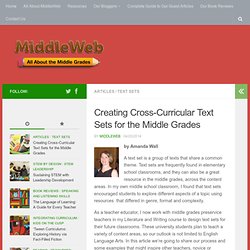
Text sets are frequently found in elementary school classrooms, and they can also be a great resource in the middle grades, across the content areas. In my own middle school classroom, I found that text sets encouraged students to explore different aspects of a topic using resources that differed in genre, format and complexity. As a teacher educator, I now work with middle grades preservice teachers in my Literature and Writing course to design text sets for their future classrooms.
These university students plan to teach a variety of content areas, so our outlook is not limited to English Language Arts. Organizing a Text Set The first step was to understand the goal behind a text set—to assemble a set of texts to explore a common theme. Science Text Sets. Our high school PD is focussing on increasing literacy across the disciplines this year.

As part of this, we are reading Cris Tovani's "Do I Really Have to Teach Reading? " The book is excessively easy to read, and sometimes I feel offended by the assumption that I don't teach reading and by the level of the book readings. My first year as a teacher I learned that students struggle with science vocabulary and my sentence structure.
That first year one student said to me "Now you're just making up words, Ms. McCarron. " Teaching with Text Sets. Supporting Inquiry with Primary Sources - Take Online Modules - Professional Development. TPS-Barat Primary Source Nexus - Fisher Science Education. Teaching Multicultural Literature . Workshop 4 . Teaching Strategies . Text Sets. Mind Mapping. Doing it Differently: Tips for Teaching Vocabulary. Every Monday my seventh grade English teacher would have us copy a list of 25 words she'd written on the board.
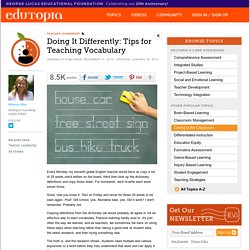
We'd then look up the dictionary definitions and copy those down. Wordle and Word Maps. CCSS. Content Literacy Strategies.
Common Core State Standards For ELA And Literacy. Achieve the Core. Literacy Design Collaborative. Videos, Common Core Resources And Lesson Plans For Teachers: Teaching Channel. Teacher Feedback To Get Students Talking. ELA Lesson Planning: Evidence And Arguments. Literary Analysis Using Evidence And Analysis For Students. ELA Lesson Reflection: Evidence And Arguments. Designing Quality Questions For The Classroom. Strategies For Building Student Vocabulary. Pairing Students To Better Understand Texts. Entry Points Into Teaching Nonfiction - Comic Strip Approach. Teaching Strategy For Reading In Any Subject: Word Clouds. Preparing Students To Write Persuasive Speeches With Scaffolding Reading. Building Problem Solving Activities That Use Technology. Writing To Learn In The Classroom. SCIENCE - The Learning Network Blog. One example of the new Science Take video series.
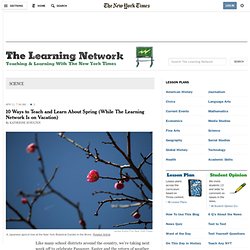
As our regular readers know, the mission of this blog is to find New York Times content suitable for teaching and learning — then, via lesson plans, writing prompts, quizzes and more, suggest ways for teachers to use it. In the course of our daily scavenging, we naturally pay close attention to the sections and features that most people think of first when they think “New York Times”: breaking news, Op-Eds and editorials, reviews, multimedia and photojournalism, important special reports and, increasingly, video. But we also regularly search a number of other, less well-known features of the paper that reliably yield curricular gold. When we present them at workshops and conferences, however, many teachers tell us they’re hearing about them for the first time.